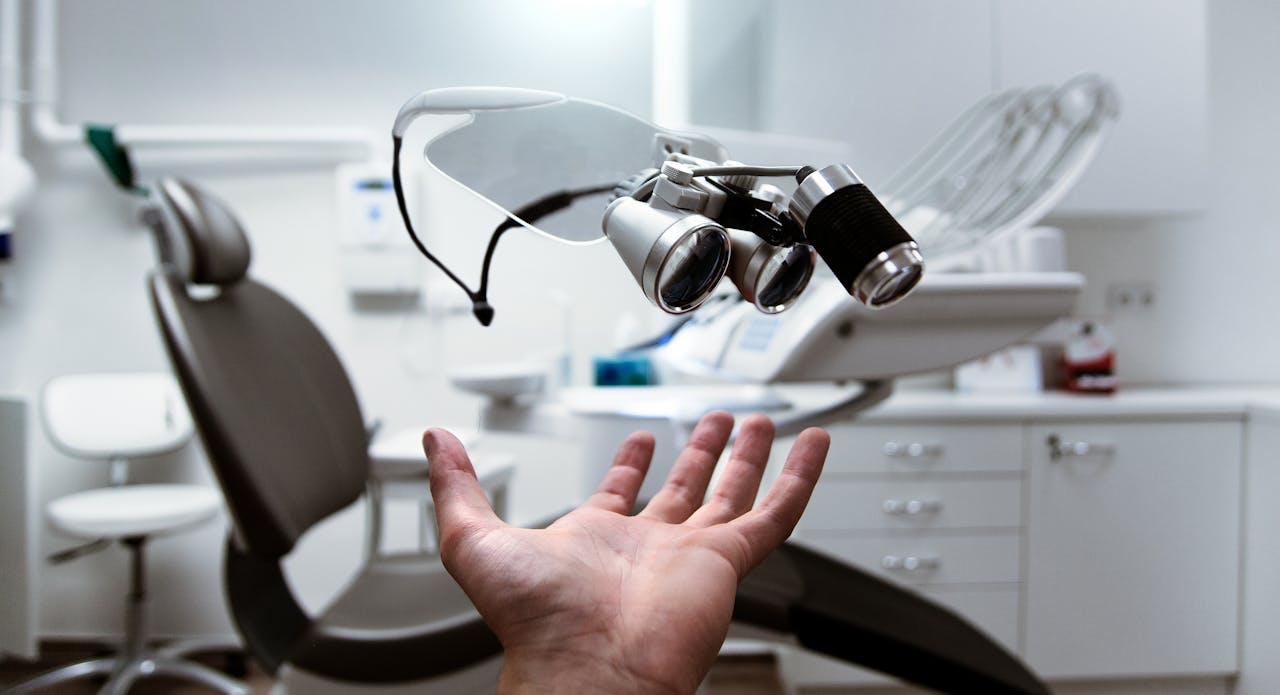
Dental X-rays are more than just a routine part of your dental visit—they’re an essential tool for maintaining your oral health. These images allow your dentist to see what’s happening beneath the surface of your teeth and gums, helping to catch potential problems early before they turn into costly and painful issues. But with terms like "bitewings" and "panoramic X-rays" being thrown around, it can be easy to feel confused about what they actually mean and how they benefit you.
In this article, we’ll break down the different types of dental X-rays, why they’re important, and what you can expect during the process. By the end, you’ll have a clearer picture of why these tools are vital to your oral health.
What Are Dental X-Rays?
“Dental X-rays, [radiographs], are usually images of your teeth, bones, and adjacent tissues that assist dentists in diagnosing and addressing any dental issues. These images use a very low level of radiation to capture detailed pictures of the inside of your mouth, making it easier to spot issues that aren’t visible during a regular exam,” my general dentist explained.
Dental X-rays play a crucial role in preventative dentistry. They allow dentists to detect:
- Tooth decay, particularly tiny spots of erosion found between teeth.
- Deterioration under current fillings
- bone loss in your jaw
- Areas of infection
- The location of teeth that have not emerged or are impacted
- Abscessed teeth (infection occurring at the root of your tooth or in the space between your gums and your tooth)
- Cysts and some oral cancers
Dentists also use X-rays to assess your suitability for procedures such as dental implants, braces, or dentures. X-rays assist your dentist in monitoring recovery after specific treatments, including dental bone grafts and root canal therapy. Without X-rays, many of these problems might go unnoticed until they cause significant pain or damage.
Types of Dental X-Rays
There are many types of dental X-rays, each serving a specific purpose. Here they are:
1. Bitewing X-Rays
Bitewings capture both the upper and lower teeth in a specific part of your mouth. These dental X-rays assist your dentist in identifying decay between your teeth or any alterations that happen just beneath your gum line.
Bitewing X-rays typically do not display the roots of your teeth.
2. Periapical X-Rays
A periapical X-ray displays your whole tooth, from the crown to the root tip. This kind of X-ray assists your dentist in identifying decay, gum issues, bone deterioration, and other irregularities of your teeth or nearby bone.
3. Panoramic X-Rays
A panoramic dental X-ray displays all the components in your mouth within one image, encompassing your upper and lower teeth, jaw joints, nerves, sinuses, and surrounding bone.
A panoramic X-ray provides your dentist with a comprehensive view of any current oral health problems.
4. Occlusal X-Rays
Occlusal X-rays assist your dentist in identifying problems with the ceiling or bottom of your mouth. These images assist in diagnosing broken or impacted teeth and assessing the roots of your front teeth. Occlusal images can assist in detecting cysts, abscesses, and jaw fractures. Pediatric dentists usually use occlusal X-rays to assess teeth in development.
5. Cone Beam CT Scans
Dentists use computed tomography (CT) scans to obtain 3D dental X-rays of your teeth, jaws, joints, nerves, and sinuses. These X-rays can additionally identify tumors or facial fractures.
Dental CT scans are also used by surgeons to assess the height, width, and position of your jawbone before they place dental implants.
6. Cephalometric X-rays
A cephalometric X-ray captures your whole head from a lateral view. It indicates to your dentist where your teeth are positioned in relation to your jaw.
Orthodontists (dentists who focus on correcting bite issues) frequently utilize cephalometric X-rays for treatment planning.
How do x-rays work
Similar to X-rays performed on other areas of your body, dental X-rays utilize electromagnetic radiation to capture images of your oral cavity. The radiation beam travels through your soft tissues and produces images of your teeth and bones.
Dental X-rays can be either traditional (captured on film) or digital (captured with digital sensors and a computer). Digital dental X-rays emit 80% to 90% less radiation than conventional dental X-ray machines.
What to Expect During a Dental X-Ray
Before performing dental X-rays, a technician will drape a lead apron across your chest and secure a thyroid collar around your neck. This aids in shielding you from excessive radiation.
When it’s time to get X-rays, you will either be seated in a chair or positioned in front of an X-ray machine. A technician will position the film or sensor, and then push a button to capture the X-ray image. It's crucial to remain as motionless as you can during this procedure.
Are Dental X-Rays Safe?
One of the most common concerns about dental X-rays is radiation exposure. However, the amount of radiation used in dental X-rays is extremely low and considered safe for both children and adults.
Advances in technology, like digital X-rays, have further reduced radiation levels while providing clearer images. Digital X-rays, for example, use up to 90% less radiation than traditional film X-rays and allow for instant image review. Cone beam CT scans provide 3D images that are invaluable for complex treatments.
These innovations not only improve accuracy but also enhance your experience as a patient, making diagnostics faster and less invasive.
To ensure your safety:
- Always inform your dentist if you’re pregnant or think you might be.
- Wear the protective apron and thyroid collar provided during the procedure.
- Follow your dentist’s recommendations for how often you need X-rays.
Conclusion
Dental X-rays are a critical part of maintaining good oral health. From detecting hidden cavities to planning life-changing treatments, they provide your dentist with the information they need to keep your smile healthy.
By understanding the different types of X-rays and their purposes, you can feel more confident and informed during your dental visits.